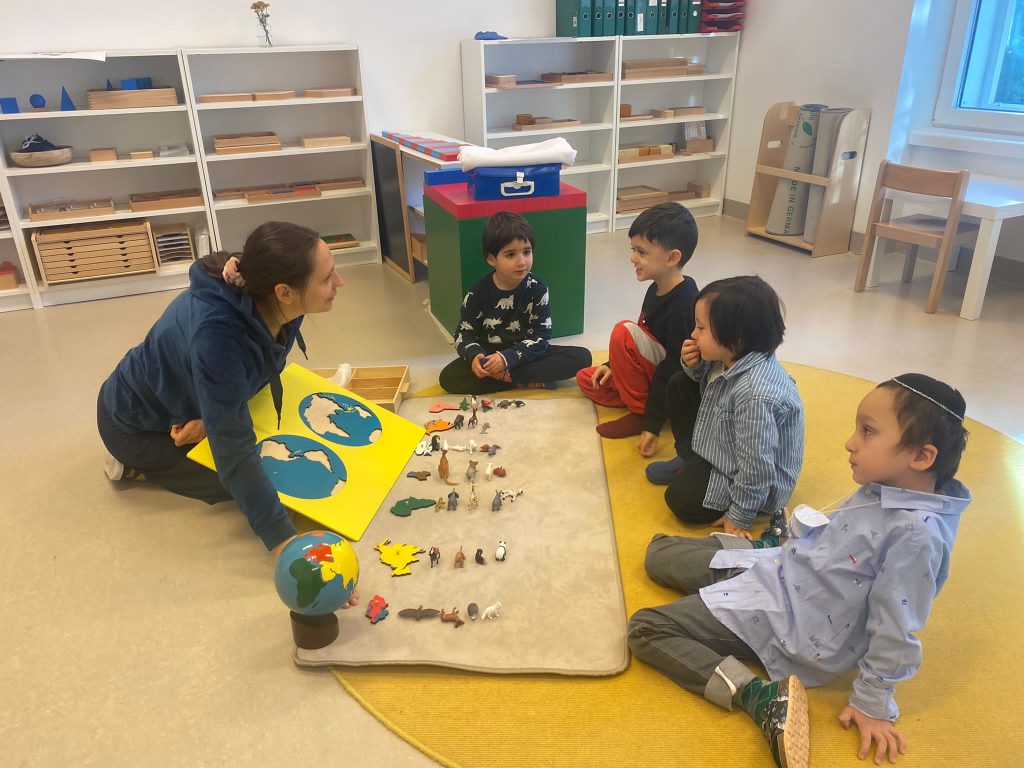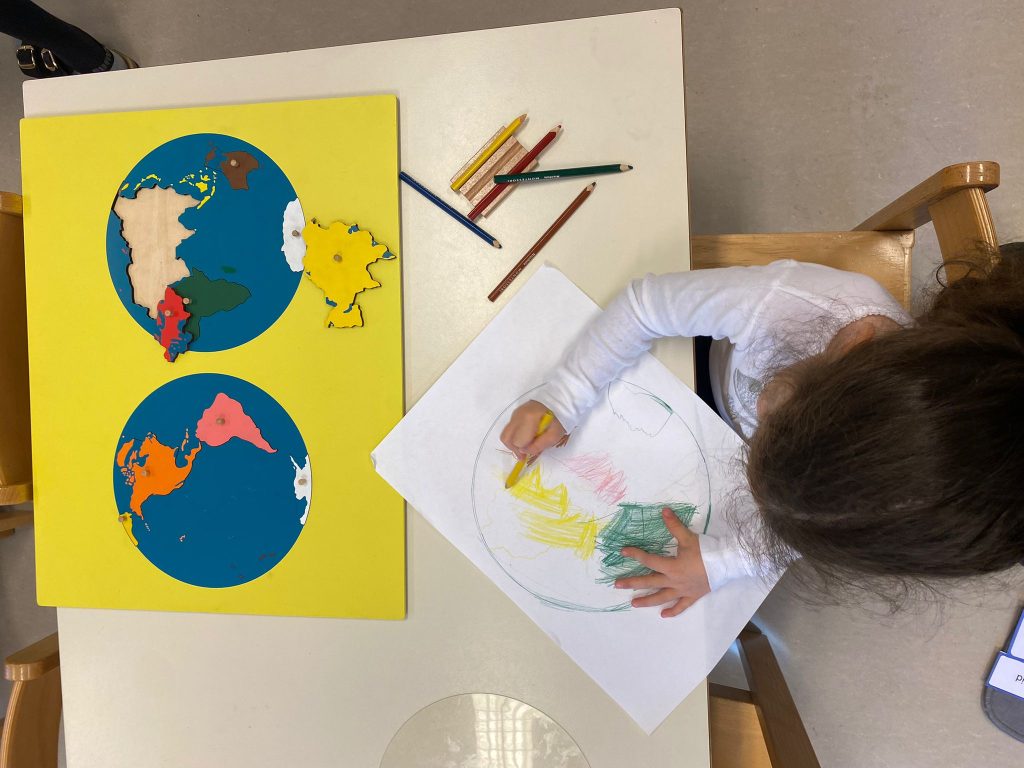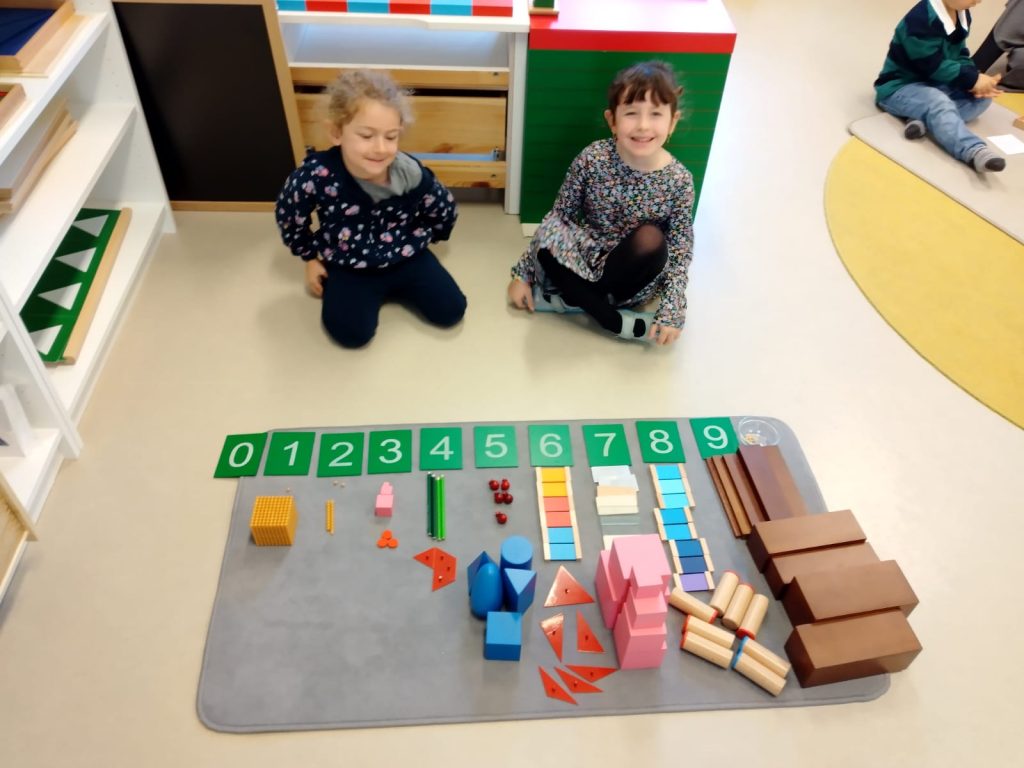Culture
Geography, botany, zoology, science, history, music and art
The Culture Curriculum explores a wide range of subjects, including: Geography, Botany, Zoology, Science, History, Music and Art.
Through a general study of culture, primary students learn to understand their community, their world, and their social responsibilities. Children learn to grasp complex social concepts like diversity and learn to respond to it with respect, learn to appreciate music and art, and develop an awareness of sustainability and eco-living.
In Lower Elementary, students acquire a vast base of knowledge about the world, its geographic features, and its history, in a progressive manner: from the origins of the universe and life, to the chronological development of writing and knowledge that made it possible. The also learn the way different cultures throughout the ages and throughout the world learn to procure food, build shelter, make clothing, develop trade and transportation. They learn to observe, categorize, and consolidate their knowledge.
By Upper Elementary, children study history in its logical sequence, progressing from prehistory through ancient history toward the present. This sequence is taught as an exciting story, with a focus on the broad arc of historical progress and essential events. Children then have the opportunity to study in depth a culture, an event, or a historical figure as part of their work. Classes are structured to give students broad understanding of how human society developed over time, and the key events that shaped human history, while also actively engaging them and giving them autonomy on researching and presenting specific details.
Art is integrated into the very work children do in language arts, science, geography or history – they learn through age appropriate activities to name famous representatives of each period or recognise artistic periods. Hands-on artistic activities include: painting, knitting or needle work, create music, etc.




